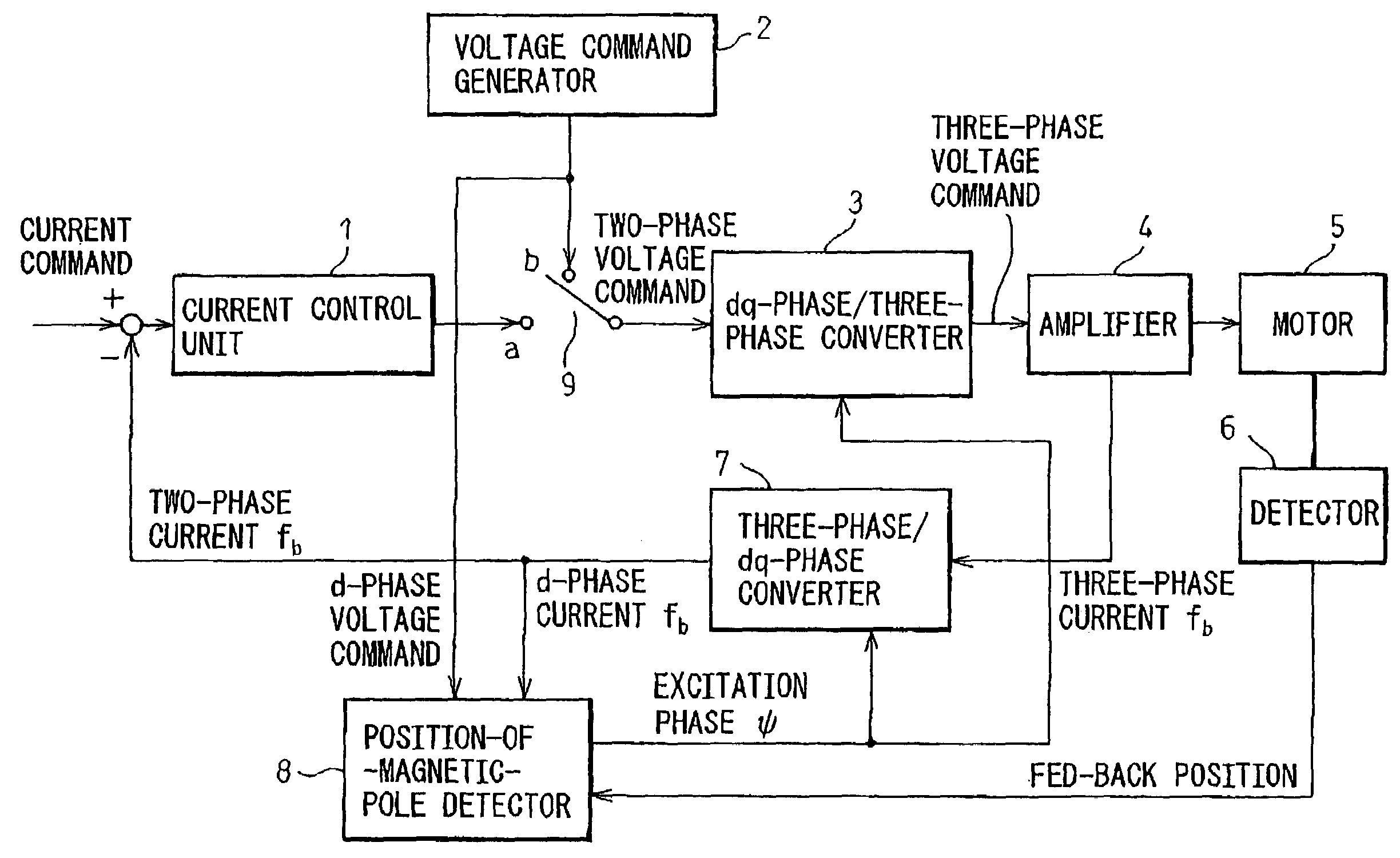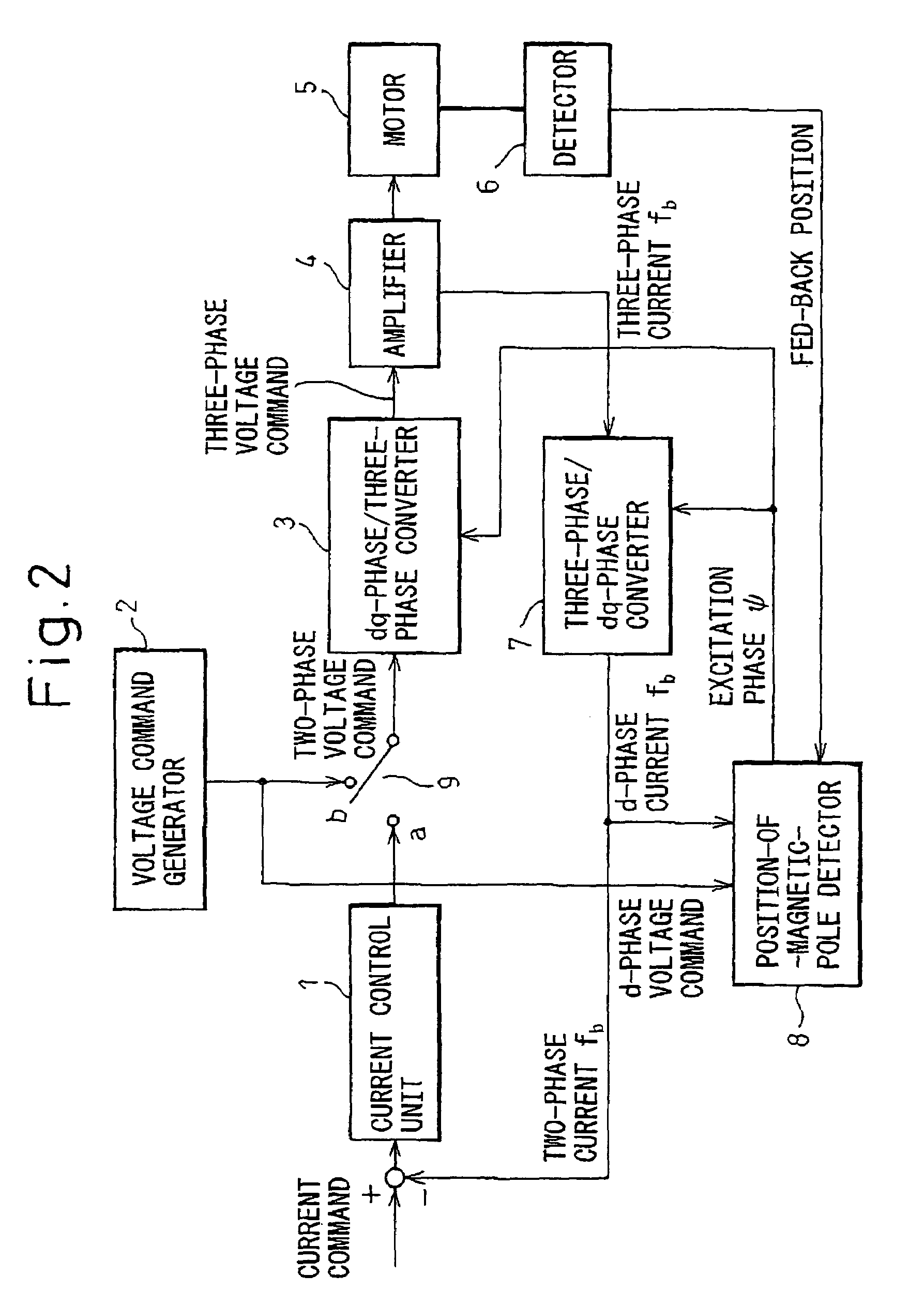Position-of-magnetic-pole detecting device and method
a magnetic pole and detection device technology, applied in the direction of electronic commutators, dynamo-electric gear control, dynamo-electric converter control, etc., can solve the problems that the position of a magnetic pole cannot be readily and accurately detected, and the methods of the related arts cannot be applied. to achieve the effect of accurately and quickly detecting the position of a magnetic pol
- Summary
- Abstract
- Description
- Claims
- Application Information
AI Technical Summary
Benefits of technology
Problems solved by technology
Method used
Image
Examples
Embodiment Construction
[0022]The structure of a rotor included in a permanent-magnet synchronous motor falls broadly into a surface permanent magnet (SPM) type in which a permanent magnet is bonded to the surface of a rotor, and an interior permanent magnet (IPM) type in which a permanent magnet is embedded in a rotor. In general, the SPM motor is of a non-salient pole type in which a d-axis inductance and a q-axis inductance that are offered by phase windings on an armature are equal to each other, while the IPM motor is of a salient-pole type in which the d-axis and q-axis inductances are different from each other.
[0023]According to the present invention, the property of the salient-pole type IPM motor that the inductances offered by the phase windings are functions of an electrical angle is utilized in order to detect a magnetic pole. The phenomenon that after magnetic saturation occurs, a response in a current varies depending on a direction in which the current flows is utilized in order to check the...
PUM
| Property | Measurement | Unit |
|---|---|---|
| electrical angle | aaaaa | aaaaa |
| electrical angle | aaaaa | aaaaa |
| frequency | aaaaa | aaaaa |
Abstract
Description
Claims
Application Information
 Login to View More
Login to View More - R&D
- Intellectual Property
- Life Sciences
- Materials
- Tech Scout
- Unparalleled Data Quality
- Higher Quality Content
- 60% Fewer Hallucinations
Browse by: Latest US Patents, China's latest patents, Technical Efficacy Thesaurus, Application Domain, Technology Topic, Popular Technical Reports.
© 2025 PatSnap. All rights reserved.Legal|Privacy policy|Modern Slavery Act Transparency Statement|Sitemap|About US| Contact US: help@patsnap.com



